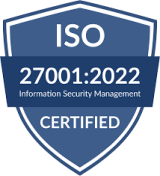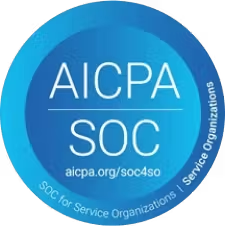Share on:
Having an accounting system for your business is crucial to the success you will experience in your business management.
No matter how much cash flow you have as a business, setting up a system helps you track your business transactions, and allows room for self-audit and checking for loopholes.
Bookkeeping and accounting seem to be tough work for most small businesses. But this is a necessary hurdle you must cross.
Are you a business owner seeking how to set up an accounting system for your business?
Then this article is for you. Here, I have outlined the step-by-step guide you need to get started.
Let's dive in!
Key Expectations
-
Open a Bank Account for the Business
-
Choose an Accounting Method
-
Choose a Computerized System
-
Record Transactions
-
Compile a Chart of Accounts
-
Determine your Payment and Receivable Terms
Open a Bank Account for your Business
The first step to setting up an accounting system for your business is opening a bank account for your business. Since you are setting up a system, this helps you keep things organized. Some business owners fall into the trap of using their accounts to run their business transactions.
Don't make the mistake of thinking you operate a small business then it's not necessary to open a business account for your business.
With a bank account for your business, you won't mix up your funds, you can easily track your business returns and even forecast.
Choose an Accounting Method
The next key step is determining which accounting method you will be using to operate your business. Remember we are setting up a system, so to keep things organized and professional, we have to stick to a chosen method.
There are two methods to choose from;
Cash Basics: This is the most common practice with small businesses, especially for those who take immediate payment for their transactions.
This uses the single-entry method of accounting. In this method, you record transactions as one entry as they come. In other words, you count your income when they come in and your expenses when you pay them.
Accrual method: This is the quite opposite of a cash basis. Here you record your transactions when they take place. You don't have to wait to receive the money. This method uses the double-entry method of accounting.
Choose a computerized system
Technology is the new normal. If you must set up an accounting system for your business, you should as well integrate technology. One good way is by adapting to the use of accounting software for your bookkeeping and accounting needs.
There are two types of accounting software; Desktop accounting and cloud accounting. Cloud accounting allows you to do your accounting without being limited to a device. This is a better option of the two.
However, you have to decide which cloud accounting suits the needs of your business.
There are a couple of options that can get you overwhelmed.
We have put up a blog post to aid your selection of the best option for your business. Read it here.
Tyms Book is one of the cloud accounting services tailored to meet the needs of small businesses and start-ups. From smart invoicing to inventory checks to automated financial reporting, to budgeting and reclaiming bills. The amazing features are there for your perusal, check it out at Tyms Africa.
Also, want to see how Tyms Book compared to other cloud accounting options? Read it here.
Record Transactions
Can we over-emphasize this point? As obvious as it is, this is one of the reasons some business owners mess up their business financial management. Keeping a record of all your business transactions helps you track what you are doing.
This helps you keep an eye on your cash flow and every other business transaction.
You don't have an accounting system if you don't record your transactions.
Remember our point on choosing an accounting method, right? Apply your chosen method here.
Compile a Chart of Accounts
A chart of accounts is a listing of all categories of accounts in a business.
A typical chart of accounts has the following major categories; Assets, liabilities, equity, income and expenses. Compiling your chart of accounts helps you keep track of all your business accounts and understand them easily.
Sometimes you require an accountant to set-up up for you. At other times, you can use the services of some cloud accounting. Tyms Book is one of such.
Determine your Payment and Receivables Terms
Another key step in setting up an accounting system is determining how you will receive payments and receivables.
This is crucial as it will influence the kind of accounting method you will operate in. Will you make room for credits or is it only on a cash basis? How frequent will the credits be and what are the terms and conditions?
These are factors to put into consideration.
Bottom line
Your business financial management is crucial to your business growth. Don't leave it to chance. Ensure you follow these outlined steps and give your business the order and structure it needs to thrive.
Was this post helpful? Drop us a comment.


Ibrahim Adepoju
1 mins read


Blessing Obiora
5 mins read


